|
Displaying items by tag: Nazis
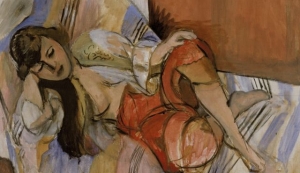
A four-year investigation led by the Netherlands Museum Association revealed that 139 artworks in Dutch public collections may have been stolen or forcibly acquired by the Nazis during World War II, many from Jewish owners. 162 Dutch museums took part in the probe, which targeted artworks acquired between 1933 and 1945. Around a quarter of the institutions were found to house objects with “potentially problematic histor[ies].”
The release of the investigation’s findings coincides with the launch of the website www.musealeverwervingen.nl, which details the objects and their histories in hopes of attaining missing information. Names of the original owners have been attributed to 61 objects and museum officials will make ongoing attempts to contact relatives or heirs of the artworks’ original owners. So far, about a dozen works have been returned to their original owners or their descendants.
According to a study conducted by the United States National Archives in 1997, the Nazis plundered 20% of the art in Europe.
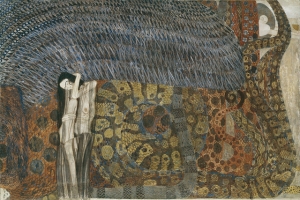
The heirs of Erich Lederer, who fled Vienna when the Nazis annexed Austria in 1938, are demanding the return of Gustav Klimt’s masterpiece Beethoven Frieze (1902). The work was created in honor of the composer’s Ninth Symphony and remains one of Vienna’s Secession building’s biggest attractions.
Lederer’s heirs filed a request with the Ministry for Education, the Art and Culture under a law that regulates the return of Nazi-looted artwork. Their claim was made possible after Austria expanded the law in 2009 to cover instances where previous owners were forced to sell their artworks for unreasonably low values following World War II.
Lederer’s Klimt painting was seized by the Nazis and later returned following World War II. However, Austrian officials would only allow Lederer to export other restituted artworks if he sold Beethoven Frieze for $75,000, half of what Christie’s estimated the painting to be worth.
The Ministry says that it has yet to receive Lederer’s heirs’ filing but that the claim will be examined once it arrives according to the revised restitution law.
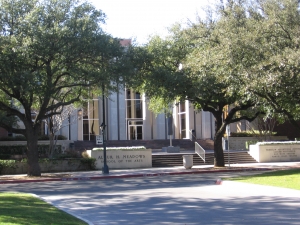
Southern Methodist University’s Meadows School of the Arts will present the seminar “The World of Art and the Fine Art of Crime” this fall from October 14 to October 18, 2013. The seminar will be helmed by retired art crime specialists from the FBI and Scotland Yard and will explore issues relating to art management, operations and collecting, famous art crimes, and international repatriation efforts.
The seminar will include lectures by two renowned art crime investigators – Richard Ellis, a former detective with New Scotland Yard who helped lead the Art & Antiques Squad for over a decade, and Virginia Curry, a former FBI undercover agent and Art Crime Team member who has worked on a number of high profile cases. The daily talks will be complemented by trip to museums, galleries, and auction houses to speak with various arts managers. Topics will include security and provenance issues, Nazi thefts during World War II, the looting of Native American art, and issues of rightful ownership.
“The World of Art and the Fine Art of Crime” has been made possible by the Meadows School’s division of Arts Management and Arts Entrepreneurship.
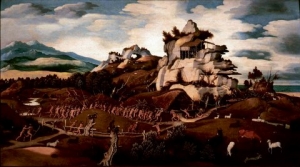
The Rijksmuseum in The Netherlands has purchased one of the earliest depictions of America in the history Western art. Discovery America by the Dutch Renaissance painter Jan Mostaert (circa 1475—1555/56) was created between 1525 and 1540 and features a made-up scene of Spanish aggressors firing cannons and rifles at indigenous people who are armed with bows and arrows.
Discovery America, which is also known as Episode from the Conquest of America, was one of 202 paintings returned to the daughter-in-law of Jacques Goudstikker, a Jewish art dealer whose collection was plundered by the Nazis. Following World War II, the painting was displayed in the Frans Hals Museum in Haarlem until Goudstikker’s heirs demanded that the work be handed over to the family in 2006. Goudstikker’s daughter-in-law approached the Rijksmuseum about purchasing the painting earlier this year. Nathan and Simon Dickinson Gallery, which has headquarters in New York and London, brokered the sale. The gallery had brought the painting to the European Fine Art Fair in Maastricht in March where they asked $14 million for the masterpiece.
Discovery America’s importance is bolstered by the fact that it is one of the oldest Dutch paintings mentioned in the definitive Dutch art history book, Het Schilder-boeck from 1605.

The Swiss government has launched a website that will help claimants, museums, and researchers track Nazi-looted artworks that have made their way to Switzerland. Switzerland became a hub for Nazi plundered artworks following World War II. The country was a popular place for Jewish art dealers who were fleeing the Nazis and many Swiss museums, collectors and dealers acquired works stolen from the Jews by the Nazis.
The new site will provide visitors with guidance on provenance research, links to relevant databases and archives, and details on Swiss museums’ own analyses of their collections. Switzerland is one of 44 countries that sanctioned the Washington Principles on returning Nazi-looted art in public collections in 1998. Under the policy, governments agreed to find “just and fair” solutions for the victims of Nazi plundering and their heirs as well as to allocate resources to identifying looted art. In spite of Switzerland’s cooperation, it is still believed that there is a fair amount of Nazi-looted artworks in Swiss collections. Provenance research has only been conducted among a select few of the government museums, private collections, and foundations that have artworks from this tragic period.
Switzerland’s newly launched website for tracking Nazi-looted artworks is www.bak.admin.ch/rk.
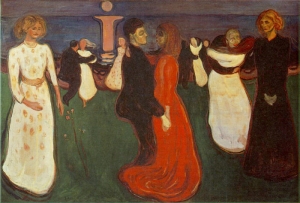
In honor of the 150th anniversary of the Norwegian artist’s birth, two museums in Oslo, Norway will organize the most comprehensive exhibit of Edvard Munch’s (1863-1944) work to date. Munch 150, which is currently on view at the National Gallery and the Munch Museum, includes the artist’s most recognizable works including The Scream, Vampire, and The Dance of Life.
The exhibition spans Munch’s extensive career from his earlier works to his death in 1944. The National Gallery’s show focuses on the artist’s formative years from 1882 to 1903 and the Munch Museum is handling his more mature works, created during the last 40 years of life.
Munch is revered for his visceral works that expertly capture the human condition but his home country did not readily accept him as a distinguished artist. In 1940, just days after the Nazis invaded Oslo, Munch bequeathed his entire oeuvre to the city in order to protect it. After the war, his works were placed in a nondescript building in the city, rarely visited, and poorly guarded.
Since then, Munch has become regarded as a highly important artist; exhibitions have been held across the globe to celebrate the 150th anniversary of his birth and a version of The Scream, the only one in private hands, recently sold at auction for a record $119.9 million, securing his role as a powerful presence in the art market. In addition, Oslo authorities agreed to built a new Munch Museum in a more distinguished building, which is expected to open in 2018.
Munch 150, which includes 270 paintings and drawings, will be on view through October 13, 2013.
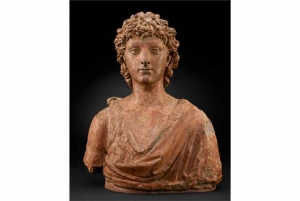
The Minneapolis Museum of Arts acquired a rare Renaissance bust of St. John the Baptist yesterday, May 8, 2013. Created by the Italian sculptor Benedetto da Rovezzano (1474-1554), the terracotta bust was one of the works handpicked by Hitler to appear in his Führermuseum, which never came to fruition. The institution was expected to house a massive collection of the most important works of Western Art in the historical canon.
Rovezzano’s bust was bought from Theresia Willi Lanz by Hitler’s special representative, Hans Posse, who was in charge of traveling across Europe seizing important works from Jewish art collectors and buying them from non-Jewish collectors. After the Führermuseum was never realized, the bust was hidden along with a number of important works by Leonardo da Vinci (1542-1519), Vermeer (1632-1675), and Michelangelo (1475-1564) in a salt mine in Austria. As it became clear that the Nazis would not win World War II, Hitler’s officials called for the destruction of the mine. However, the miners from the Austrian town wished to keep their livelihood intact and worked to save the mines and the art inside by removing inactivated Nazi bombs and setting them off through controlled explosions within the tunnels of the mines, saving the salt and the art but making them inaccessible. The bust was ultimately returned to the Netherlands.
Rovezanno was one of the most prominent sculptors during the high Renaissance and his bust of St. John the Baptist is well known among Renaissance experts. Created in Florence during the time when Leonardo, Michelangelo, and Raphael (1483-1520) were working there, the bust is the earliest Renaissance sculpture in the Minneapolis Institute’s collection. The bust of St. John the Baptist will go on view in the Minneapolis Institute of the Arts permanent galleries alongside other renowned Renaissance busts by Agostino Zoppo (circa 1520-1572) and Giovanni Battista Caccini (1556-1613).
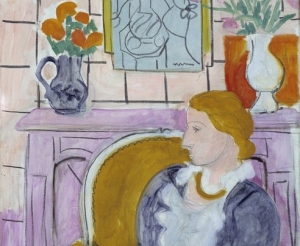
The descendants of a Parisian art dealer are demanding that the Henie Onstad Art Center near Oslo, Norway return Henri Matisse’s (1869-1954) Blue Dress in a Yellow Armchair (1937) to them. Nazis seized the painting from its owner, Paul Rosenberg, prior to the outbreak of World War II. Ultimately, Rosenberg, one of the most prominent French art dealers and a personal friend of Pablo Picasso and Matisse, fled to New York and survived the war.
The painting in dispute has been a celebrated part of the Onstad’s collection since the museum was established in 1968. The work was donated to the fledgling institution by art collector Niels Onstad and his wife Sonjia Henie, an Olympic figure skater. Museum Director Tone Hansen attests that Onstad and Henie bought the painting from the Parisian Galerie Henri Benezit in 1950, unaware of its troublesome provenance. Hansen was unaware that Nazis had stolen the painting until the Art Loss Register, an organization that tracks lost and stolen paintings, notified him in 2012.
Art Registry documents show that Rosenberg purchased Blue Dress in a Yellow Armchair directly from Matisse in 1937. Following World War II, Rosenberg attempted to re-establish his business and tried to recover the 400+ works that had been taken from him by the Nazis. The painting was marked on Rosenberg’s personal documents as missing after the war. He also reported the painting missing to French authorities in 1946.
While Rosenberg’s heirs hope that the painting will be returned to their family, Norwegian law states that if a person has had an item in good faith for over 10 years, they are deemed the rightful owner. However, the argument is in contrast to the Washington Conference Principles on Nazi-Confiscated Art, which Norway is a part of.
The heirs of Paul von Mendelssohn-Bartholdy, a prominent German Jewish banker during the early 20th century, filed a lawsuit against the German state of Bavaria for failing to return a Pablo Picasso (1881-1973) painting that once belonged to their relative. The plaintiffs claim that Mendelssohn-Bartholdy, a relative of the composer Felix Mendelssohn (1809-1847), was forced to sell the painting titled Madame Soler (circa 1903) after ending up destitute at the hands of the Nazi regime.
Mendelssohn’s descendants say that the Bavarian State Paintings Collection, a division of the Bavarian state, acquired Madame Soler in 1964 from New York-based art dealer Justin Thannhauser, who had purchased the work from Mendelssohn-Bartholdy in 1934. The plaintiffs have been attempting to seek restitution from the German state since 2009.
Madame Soler, which is from Picasso’s seminal blue period, is said to be worth approximately $100 million.
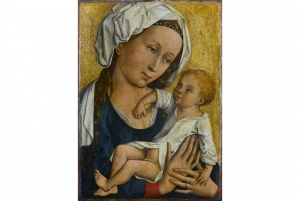
Germany’s Staatsgalerie Stuttgart museum returned a 15th century Renaissance painting stolen by Nazis during World War II to the estate of a Jewish art dealer. The museum acquired Virgin and Child, which is attributed to the Master of Flémalle (1375-1444) who is identified by historians as Robert Campin, in 1948.
The painting once belonged to Max Stern (1904-1987) who lost over 400 paintings to the Nazi regime during a forced sale in 1937. After Jews were banned from selling art in Nazi-occupied Europe, Stern shuttered his Dusseldorf gallery and escaped to London in December of the same year. Before settling in Montreal, Stern sold even more paintings, including Virgin and Child, in order to buy a German exit visa for his mother. Stern went on to purchase the Dominion Gallery of Fine Arts and established himself as one of Canada’s most important art dealers and collectors.
Upon his death in 1987, Stern donated a portion of his estate to Concordia and McGill Universities in Montreal as well as the Hebrew University in Jerusalem. For the past ten years Concordia has been working to recover the hundreds of paintings Stern lost at the hands of the Nazis. The initiative, known as the Max Stern Art Restitution Project, has facilitated the return of 9 works originally belonging to Stern; Virgin and Child is the 10th and the only work to be returned from a German museum thus far.
A ceremony was held on Tuesday, March 5, 2013 at the Canadian Embassy in Berlin to celebrate the painting’s return.
|
|
|
|
|